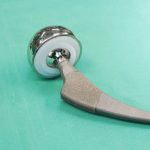Understanding Household Air Pollution
Household air pollution is a pervasive issue, often stemming from common indoor sources. These include cooking appliances, heating systems, and even cleaning products. Such everyday items release pollutants like carbon monoxide and volatile organic compounds, which significantly impact indoor air quality.
Statistics highlight that indoor air quality can be 2 to 5 times more polluted than outdoor air. This poor air quality poses considerable health risks, including respiratory issues, cardiovascular disease, and other serious conditions. Understanding these health risks is crucial for taking proactive measures.
In the same genre : Unlocking Wellness: The Unique Advantages of Pilates for UK Women in Their 30s
Recognizing indoor pollutants is the first step in mitigating these dangers. Regular monitoring and maintenance of household appliances are imperative. Additionally, increasing ventilation and using air purifiers can effectively reduce pollutant levels. By addressing these factors, one can dramatically improve indoor air quality, thereby safeguarding personal and family health.
Improving Ventilation in Homes
Enhancing fresh air circulation at home is crucial for maintaining healthy indoor air quality. Proper ventilation helps to dilute indoor pollutants and reduce moisture levels, which can be achieved by employing various strategies. To facilitate natural airflow, consider opening windows and doors on opposite sides of your home to create a cross-ventilation effect. This simple approach can significantly improve ventilation and keep the air fresh.
Additional reading : Strategies for UK Parents to Foster Lifelong Healthy Eating Habits in Teens
In areas with high humidity, such as bathrooms and kitchens, using exhaust fans effectively is essential. These fans help to remove excess moisture, preventing mould growth and enhancing the overall air quality. Ensure that exhaust fans are in good working condition and vented outdoors for optimum performance.
For those keen to maximise their home’s natural airflow, rearranging furniture and selecting light curtains or blinds can also assist in enhancing air movement. Additionally, the strategic use of indoor plants can contribute to improving indoor air quality by absorbing toxins and releasing oxygen.
By focusing on these strategies, you can create a healthier living environment by promoting natural airflow and mitigating the effects of indoor pollutants and dampness.
Utilizing Air Purifiers Effectively
In today’s environment, air purifiers are essential for maintaining cleaner indoor air. There are various types, each with distinct filtration systems. HEPA filters, for example, target small particles, removing allergens efficiently, while activated carbon filters specialise in eliminating odours and vapours.
Selecting the right air purifier involves understanding your specific needs. If you aim to remove allergens, a HEPA-based system is advisable. These filters capture 99.97% of particles, including dust mites and pollen. For those dealing with strong smells or chemicals, a unit with an activated carbon component is beneficial.
Maintaining an air purifier is key to its effectiveness. Regularly replacing filters is crucial, as clogged systems reduce functionality. Check the manufacturer’s guidelines for replacement timelines to ensure optimal performance in allergens removal and pollutant reduction.
Air purifiers significantly impact indoor air quality, particularly for those with respiratory issues. They reduce the presence of harmful pollutants, such as smoke and pet dander, making your home a healthier space. By strategically selecting and maintaining your device, you enhance its ability to foster a cleaner, more breathable home environment.
Eco-Friendly Products for Clean Homes
In today’s world, many people are seeking eco-friendly products for their homes, as these provide a healthier and more sustainable environment. Choosing non-toxic cleaners over conventional products reduces the exposure to harmful chemicals that can have adverse health effects. Traditional cleaners often contain substances that are not only harmful to humans but also detrimental to the environment.
When exploring sustainable choices, it is essential to focus on the ingredients and packaging. Many eco-friendly products are made with natural ingredients such as essential oils and plant-based substances that effectively clean without toxic residues. Additionally, these products often come in recyclable packaging, further reducing environmental impact.
Opting for non-toxic cleaners has immense benefits. They contribute to improved indoor air quality and reduce the risk of allergies and respiratory issues. Moreover, by adopting these sustainable choices, individuals can protect the planet for future generations. Notably, supporting companies that prioritise environmentally friendly production processes fosters a market shift towards more responsible manufacturing practices. Thus, embracing eco-friendly alternatives not only enhances personal well-being but also promotes global sustainability.
Reducing Indoor Allergens and Pollutants
Indoor allergens can significantly affect air quality and health. Effective strategies to minimise them are crucial. Dust mites, pet dander, mould, and pollen are common indoor allergens. Regular vacuuming and cleaning can help in dust reduction, crucial for mitigating these allergens. Frequent washing of bedding and using high-efficiency particulate air (HEPA) filters can capture airborne particles, reducing exposure.
Another concern is chemical pollutants from household items. These can originate from cleaning products, paints, and furnishings. Opt for natural or low-VOC (Volatile Organic Compounds) products to lessen chemical exposure. Proper ventilation during and after using such items can also aid in dissipating harmful fumes.
Decluttering is another important step. It not only makes cleaning more accessible but also reduces surfaces where allergens can accumulate. Consider reducing unnecessary items and organising spaces efficiently to maintain a clean environment.
In essence, maintaining a healthy indoor space requires consistent efforts in dust reduction, addressing indoor allergens, and managing chemical pollutants. Implementing these strategies effectively can result in improved air quality and enhance overall well-being within your living space.
Implementing Humidity Control Strategies
Managing humidity control is crucial for maintaining indoor air quality and reducing health risks. High humidity can foster dampness and mold growth, negatively affecting respiratory health. Monitoring tools, such as hygrometers, are essential. These devices offer precise humidity readings, enabling residents to make informed decisions about humidity control.
Several humidity control techniques prove effective. Dehumidifiers, for instance, can lower excess moisture indoors. Installing ventilation fans in moist areas like kitchens and bathrooms also aids in dampness reduction. Air conditioners further help by removing humidity from the air.
Preventing mold is a vital step, as mold thrives in moisture-rich environments. To reduce mold risk, maintain indoor humidity levels below 60%. Regular checks for leaks or water damage and prompt repairs can prevent moisture accumulation.
Strategies like these are not only practical but also improve overall quality of life by ensuring a healthier living environment. They create comfort by sustaining a balanced humidity level, ultimately facilitating mold prevention and enhancing air quality.
Utilizing Natural Air Quality Monitors
Understanding and maintaining good indoor air quality is vital for the well-being of both humans and pets. Continuous real-time monitoring provides insights into the air’s condition through air quality monitors and indoor sensors. This technology helps identify pollutants that might otherwise go unnoticed.
Modern air quality monitors vary greatly, from basic models that measure individual pollutants to advanced systems that track multiple characteristics comprehensively. When choosing an air quality monitor, consider features like connectivity for real-time updates and ease of integration with your existing home tech.
Properly interpreting data from these monitors is crucial. For instance, a spike in particle concentration shown by the sensor may indicate harmful indoor air quality and the need for immediate action. Mitigating these issues might involve increasing ventilation, using air purifiers, or even consulting with indoor environment professionals.
Simple steps such as keeping windows open or regularly checking filters contribute to maintaining a healthy indoor atmosphere, guided by the valuable insights provided by air quality monitors and sensors. Real-time monitoring empowers users to proactively manage their environment proactively.
Engaging Family in Air Quality Awareness
Educating your family about air quality can significantly impact overall health and well-being. Early family involvement is key to fostering an environment of responsibility and care. Introduce simple concepts about air pollution and its effects, adapting them to be age-appropriate and relatable for everyone. Activities like DIY air quality experiments bring learning to life, making the science tangible and engaging.
Air quality education is fundamental in advocating healthier indoor and outdoor environments. Begin with basic discussions about how air pollution affects health, using real-life scenarios. For instance, highlight how small actions, such as reducing the use of aerosols, can collectively enhance air quality. Harness technology, like air quality monitors, to visualise invisible pollutants, making data-driven education possible.
Encouraging advocacy within your household sets a precedent for wider community discussions. Share stories of local initiatives, inspiring family members to participate in or support clean air campaigns. This fosters a sense of responsibility beyond the home, influencing others to champion for healthier communities.
By discussing and understanding air quality concerns together, families nurture informed citizens who are proactive in promoting cleaner habitats for current and future generations.
















